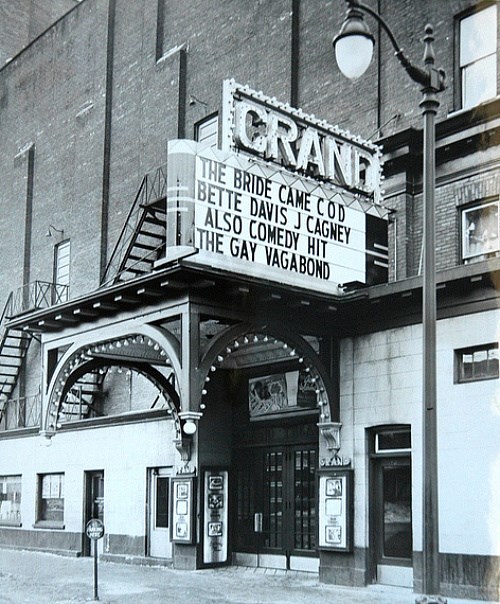The landmark Grand Theatre has been an entertainment venue in Sudbury for more than 110 years. And, at times during its long history, the theatre at 28 Elgin St. was very grand.
During a renaissance from 1987 to the mid-1990s, it booked A-list entertainers such as Johnny Cash, Celine Dion, Tom Jones, Nana Mouskouri, k.d. lang, Conway Twitty, Wayne Newton, Engelbert Humperdinck, Crowded House, George Carlin, the Smothers Brothers, Howie Mandel and the Beach Boys.
During this period, Cinéfest's gala films and receptions were held at the theatre.
Sudbury.com invites readers to reminisce about the Grand and the entertainers they saw there for our Memory Lane feature.
The Grand Opera House opened in April 1909. Its investors were 14 businessmen, including William Bell who shared an optimistic vision for the young city of about 4,200 – neighbouring Copper Cliff's population was about 3,000. The theatre originally had more than 1,000 seats, three balconies, majestic high ceilings, sophisticated art nouveau decorations throughout and an elegant lobby.
Early audiences were captivated by a circuit of performances from theatrical productions to musicians, singers to the Lemon Brothers' circus, a Wild West show, a boxing kangaroo, a psychic, a billiards champion and silent films.
In December 1929, the first all-talking feature movie, “Lights of New York,” was shown. The owners of the renamed Grand Theatre invested $20,000 to install the Vitaphone sound system, which involved a record disc played in sync with the film.
During the 1930s, the Grand was owned by William Mason, owner of the Sudbury Star.*
The Grand survived The Depression, the death of vaudeville, and the Second World War. But by 1949, it was in need of major repairs. New owners renovated the building into two movie theatres, the Empire and the Plaza.
Laurentian University used the offices in the building at 28 Elgin for classes until its campus opened in 1964. Later, Gauvreau Academy of Dance and Modeling was located in the upper offices.
When the movie theatres closed in 1986, Ted Szilva, developer of the Big Nickel tourist attraction, bought the building for $400,000 and spent another $200,000 on renovations. Ornate chandeliers from the Capitol Theatre on Durham Street were installed and this added to the grandeur.
Legendary performer Tony Bennett opened the revitalized performance centre in 1987.
Szilva's plans may have been too grand. Although Sudbury audiences were enthusiastic about its heady schedule of entertainment, the city's population was not large enough or wealthy enough to fill the theatre night after night. The building went into receivership.
Claude Michel purchased the Grand with his father, Arnel, and two private investors in 1988. He continued to book top acts, but asked the city for relief for property taxes of $50,000. The city "rented" the theatre for 40 nights over 12 months and community art groups could apply to use the space at no cost. The relief program ended in 1996.
Michel found running a nightclub, then known as the Big Thunder Bar, more profitable. The seats were removed and the sloped floor was levelled. Office space in the building was converted into apartments.
The Grand was put on the market in 1999 for $1 million, but there was little interest from prospective buyers. Michel finally sold it in 2013.
Today, the Grand Nightclub is a popular dance club that also books concerts and rents space for theatre productions and special events. A second bar, in the old Plaza theatre space formerly known as Coyotes, is now called Fuse.
Post your memories about the Grand Theatre in the comments below, on Facebook, or email them to [email protected]. If you do comment, we may use your name and story in the Memory Lane follow-up piece Jan. 19.
Vicki Gilhula is a freelance writer. She is a former editor of Northern Life and Sudbury Living magazine, and has a special interest in local history. Memory Lane is made possible by our Community Leaders Program.
Sources: Northern Life archives
Sudbury Star archives
Sudbury: Rail Town to Regional Capital. Wallace, C.M.; Thomson, Ashley (1993)
*A sentence was removed here as conflicting sources make the exact location of CKSO at this time difficult to confirm.
